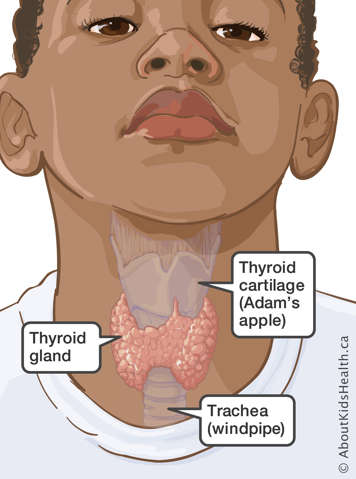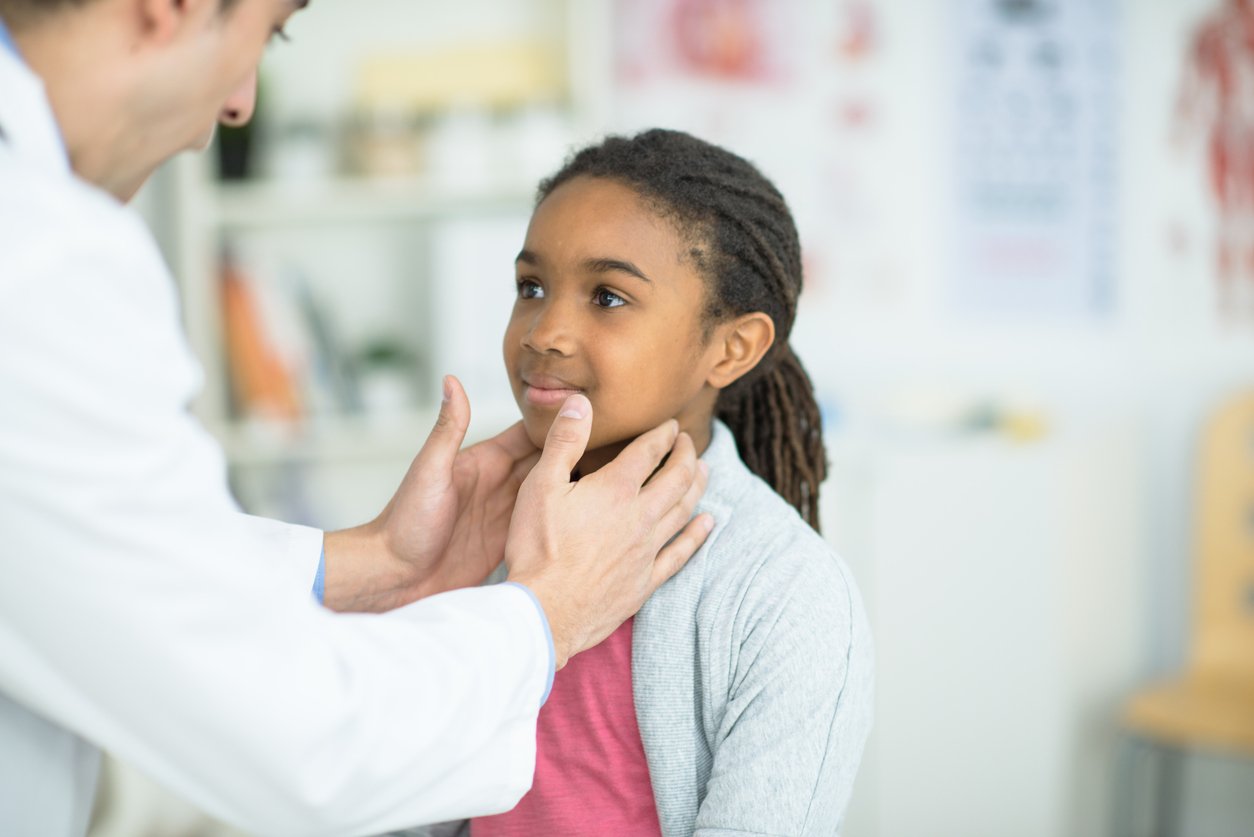Hypothyroidism (Underactive Thyroid)
Hypothyroidism is a condition that occurs when the thyroid does not make enough thyroid hormones. This means that the thyroid is underactive.

What is the thyroid?
The thyroid is a small, butterfly-shaped gland that sits just in front of your windpipe (trachea) at the base of the neck. It makes chemicals called hormones that go into the bloodstream. The thyroid gland makes two main hormones: T4 (thyroxine) and T3 (triiodothyronine).
What do thyroid hormones do?
Thyroid hormones are important in controlling how fast the body uses up energy. They impact how your body makes cells and uses the food you eat, and even how your brain works.
What are the symptoms of hypothyroidism?
When there is not enough thyroid hormone in the body, many body functions start to slow down. Sometimes children experience a lot of symptoms and sometimes they do not experience any at all. Babies show different symptoms than children and adolescents.
The majority of babies have no symptoms, but those that do may experience:
- jaundice (yellowing of the skin and whites of the eyes)
- sleepiness
- poor appetite
- constipation (infrequent, hard bowel movements)
- hoarse cry
- large tongue
- dry skin
- low body temperature
Children and adolescents with hypothyroidism may experience:
- weight gain
- slow growth (their height is not increasing at a normal rate)
- cold intolerance (they feel cold when everyone else in the room is comfortable with the temperature)
- sleepiness
- difficulty concentrating
- dry hair and skin
- low heart rate
- constipation (infrequent, hard bowel movements)
- goitre (an enlarged thyroid gland appearing as a mass in the neck)
What causes hypothyroidism?
Hashimoto’s Thyroiditis
The most common cause of hypothyroidism in children and adolescents is an autoimmune disease called Hashimoto’s Thyroiditis. In this condition, the body’s immune system attacks the thyroid gland. As a result, the thyroid gland does not make enough thyroid hormones.
Congenital Hypothyroidism
If a baby is born with hypothyroidism it is called congenital hypothyroidism. This can happen because the baby was born without a thyroid or the thyroid did not develop completely before birth. This can lead to developmental problems and poor growth. In Canada and the United States, screening for hypothyroidism is part of the newborn screening program performed in the first few days of the baby’s life.
Damaged Thyroid
Radiation, injury to the neck or previous thyroid surgery can also damage the thyroid. Once damaged, the thyroid might not make enough thyroid hormone.
Low iodine intake
Children may also get hypothyroidism because they do not have enough iodine in their diet. Iodine is a mineral that the body needs to make thyroid hormone. In Canada, iodine is added to a lot of the foods that we eat. Because of this, it is very uncommon for a child in Canada to get hypothyroidism from a lack of iodine.
Other causes
Some medications or infections block the thyroid from making enough thyroid hormone. These are rare causes of hypothyroidism.
How is hypothyroidism diagnosed?
If your child is having symptoms of hypothyroidism they should see their doctor. Usually the doctor only needs to do a physical exam and some blood tests to know if your child has hypothyroidism.
The doctor will examine your child’s thyroid to see if it feels swollen. An enlarged thyroid, known as a goitre, can mean something is wrong with the thyroid.
There are two main blood tests used to find out if a child has hypothyroidism.
- Thyroid Stimulating Hormone (TSH): TSH is a hormone made by a gland in the brain called the pituitary gland. TSH tells the thyroid to make thyroid hormone. The pituitary gland makes extra TSH when the thyroid is not working properly. So, children who have hypothyroidism usually have high levels of TSH.
- T4: The thyroid makes T4, which is one of the main thyroid hormones. Children with hypothyroidism have low levels of T4 in their blood.
Your physician may also want to get a scan of your child’s thyroid to check for abnormalities.
How do you treat hypothyroidism?
Children and babies with hypothyroidism have to take synthetic (man-made) thyroid hormone. Thyroid hormone comes in the form of a pill. This pill can be crushed, chewed or swallowed; it must be taken every day. They will usually need to take it for the rest of their lives. It is very important that babies and children take this medication so that their body and brain work properly. Children with hypothyroidism need to have blood work done regularly and will likely need their dose changed as they grow.
